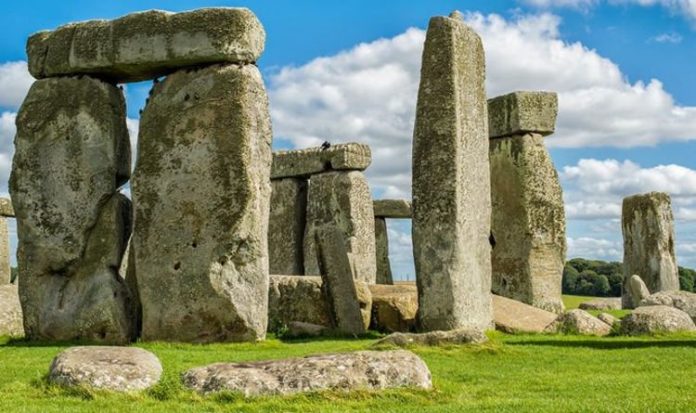Stonehenge: Transportation of Welsh stones discussed by expert
Professor Mike Parker Pearson discovered an ancient stone structure in Wales during BBC Two’s ‘Stonehenge: The Lost Circle Revealed’ documentary earlier this month that is believed to be the “building blocks” of Stonehenge. Experts now theorise a dismantled stone circle at Waun Mawn, in the Preseli Hills of West Wales, is likely to have been used as the foundation for the site that stands in Salisbury, Wiltshire, today. Excavations and analysis of the area dated the stone circle to around 3400BC and found several similarities between both sites, leading Prof Parker Pearson to theorise people were moving eastward and bringing their cultural “crown jewels” with them.
But that theory barely scratches the surface, according to retired scientist and academic Colin Berry, who believes there was a much more pressing need for such a monument.
He told Express.co.uk: “Thinking has remained not just influenced, not just dominated, but ensnared by William Stukeley’s solstice orientation celebration idea in 1740.
“Rival theories scarcely get a look in. Indeed, they hardly get a minute of attention.
“The victim? Knowledge of the reality of life in Britain 5,000 years ago and more at a time when there was an intermingling of two largely-incompatible populations – native-born hunter-gatherers and farmers streaming in by sea from the east.
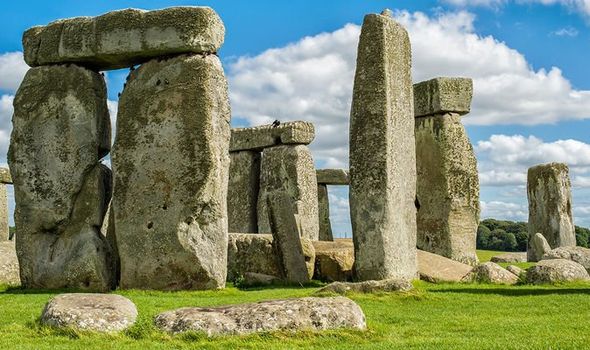
Stonehenge has interested archaeologists for decades (Image: GETTY)

Mike Parker Pearson during the recent BBC documentary (Image: BBC)
“These were notably from the far end of the Mediterranean, bringing their pastoral skills with them – for raising both crops and livestock – which raises what I consider to be the true purpose of the original Stonehenge.”
Last year experts made a breakthrough in understanding the monument’s history, when a team of researchers published a study suggesting the ancestors of the builders of the ancient monument travelled west across the Mediterranean before reaching Britain around 4000BC.
They compared Neolithic human DNA found across Britain with that of people alive at the same time in Europe.
According to their results, the Neolithic inhabitants were descended from Anatolia (modern-day Turkey) and moved to Iberia before heading north.
And Mr Berry, who is a former medical specialist, says this is key to understanding why the monument was built.
READ MORE: Stonehenge story ‘twist’ after 5,000-year-old charred remains of ‘Neolithic lunch’ found
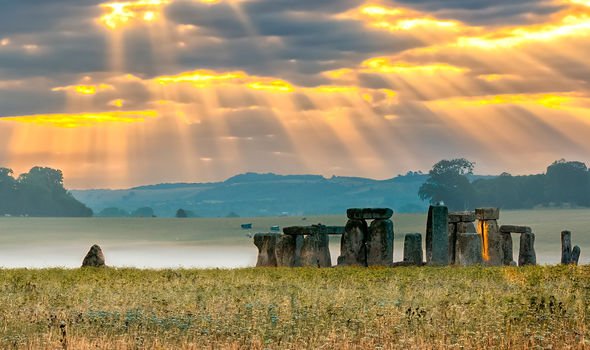
A new theory has been put forward for Stonehenge (Image: GETTY)
He added: “It had nothing to do with solstices, but serving a different, more mundane purpose.
“My own hypothesis is simple, absurdly simple, yet gets scarcely any mention.
“The original Stonehenge, plus precursor sites nearby – Durrington and Woodhenge, was designed to provide an immediate refuge for farmers working away from home against enemy arrows raining down in spasmodic and surprise attacks.
“Initially, the innermost bank was protected on the outside by its outer raised ditch to take shelter, and maybe fire back with one’s own bows and arrows.
“That was followed in short order by the erection of timber circles, one initially, later followed by multiple concentric circles. That was followed by importation of stone from different sources.”
The recent BBC documentary also challenged long-held views that our Neolithic ancestors transported the stones along a number of waterways.
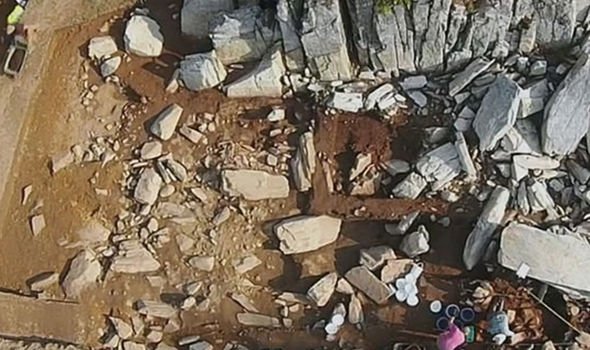
A site in Wales was identified (Image: BBC)
Prof Pearson’s discovery was made on the northern slopes of the Preseli Hills, “reigniting support for an alternative theory” that it would have been easier to travel by land.
And Mr Berry explained why this could have been a treacherous journey.
He added: “Look at a map and one sees a vast tract of territory separating West Wales from Salisbury Plain.
“Evidence from DNA, pottery, etc indicates that the migrants were not indigenous to the British Isles.
“They had come, via land and sea, from Brittany etc but had earlier still come much further in preceding centuries – namely from the eastern Mediterranean.
“What’s more, they had brought with them advanced farming culture and practices, which set them apart from the indigenous community in Britain with whom they had to coexist or combat on arrival, given they would be needing to appropriate land for their animals and crops.
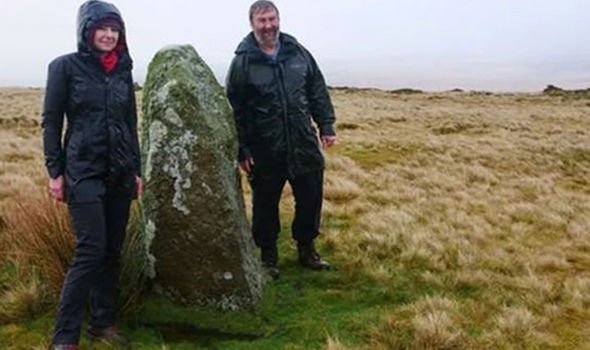
Prof Parker Pearson believes the stones were transported to Salisbury (Image: BBC)
“Irrespective of reasons, those migrants to Wales developed itchy feet and wished to extend their range.
“That would have brought continuous albeit spasmodic contact and conflict with the hunter-gathers.”
Mr Berry now believes the ancient structures erected in Wales were transported along with the travellers as a means to protect the “VIPs” in the community.
They were then rebuilt in Salisbury to protect the farmers there.
He explained: “We’re invited by Prof Mike Parker Pearson and others to consider various theories, to do with having ‘souvenirs’ of one’s home territory for one reason or another.
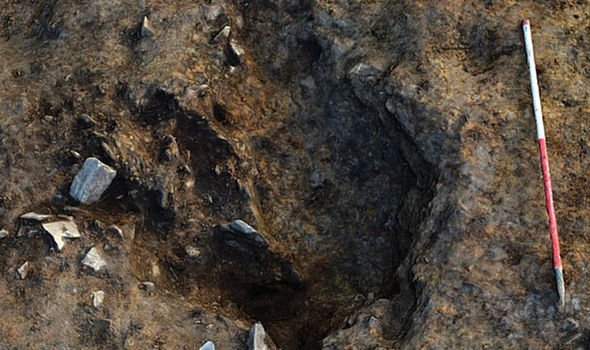
The stones may have been used to build a defence (Image: BBC)
“Might there be a more pressing reason, one to do with the bottom line of Neolithic existence, namely competition between two conflicting lifestyles? I say yes.
“First, choose and extract bluestones of intermediate size, albeit barely portable, since needing to be fairly massive.
“They were intended to be taken on the journey by monolith porters who would assemble stone-by-stone into protective ‘blockhouses’ at each overnight stop. Why? To protect one, or at most a handful of VIPs against onslaughts of enemy arrows.
“Two or three months later, the migratory travellers reached their destination on Salisbury Plain. The immediate purpose of the bluestones had been served.
“If they had successfully fulfilled a protective role en route, might they not be useful in that same capacity at their destination?”
